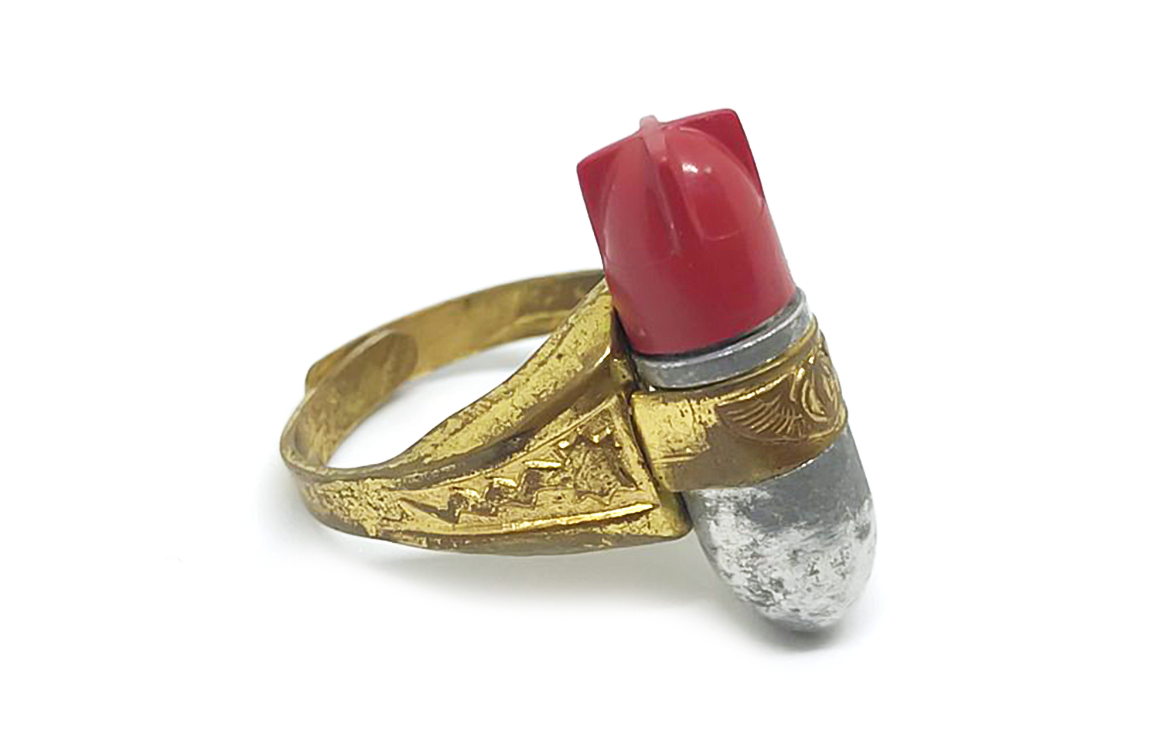“It’s a seething scientific sensation!”
In 1947, General Mills’ KiX cereal brand offered the Atomic “Bomb” Ring as a premium in exchange for 15 cents plus a cereal box top. Also known as the Lone Ranger Atomic Bomb Ring, it was a reflection of the public’s preoccupation with the power and potential of atomic energy at the time.
The ring had an adjustable gold-coloured band with lightning-blast explosions on its sides. An aluminum warhead was mounted on top and contained a removable red plastic tailfin. The tailfin was hollow, making it a hidden compartment for tiny secret messages.
Removing the red base gave access to a “hidden atomic chamber”, a.k.a. a spinthariscope, in the warhead. Looking through the toy spinthariscope’s plastic lens while in a dark room revealed flashes of light. These scintillations were the by-product of an interaction of radioisotopes caused by polonium alpha particles striking the ring’s zinc sulfide screen.
While infusing minute traces of radioactive material into a kid’s toy wouldn’t fly today, advertisements for the ring assured that it was “perfectly safe” and contained “harmless” atomic elements. The minute traces of Polonium-210 in the spinthariscope had a half-life of about 140 days, meaning that any Atomic Bomb Rings still in existence today can no longer produce visible scintillations.
Note: If you buy something using the eBay link in this story, we may earn a small commission. Thank you for supporting independent toy journalism!


